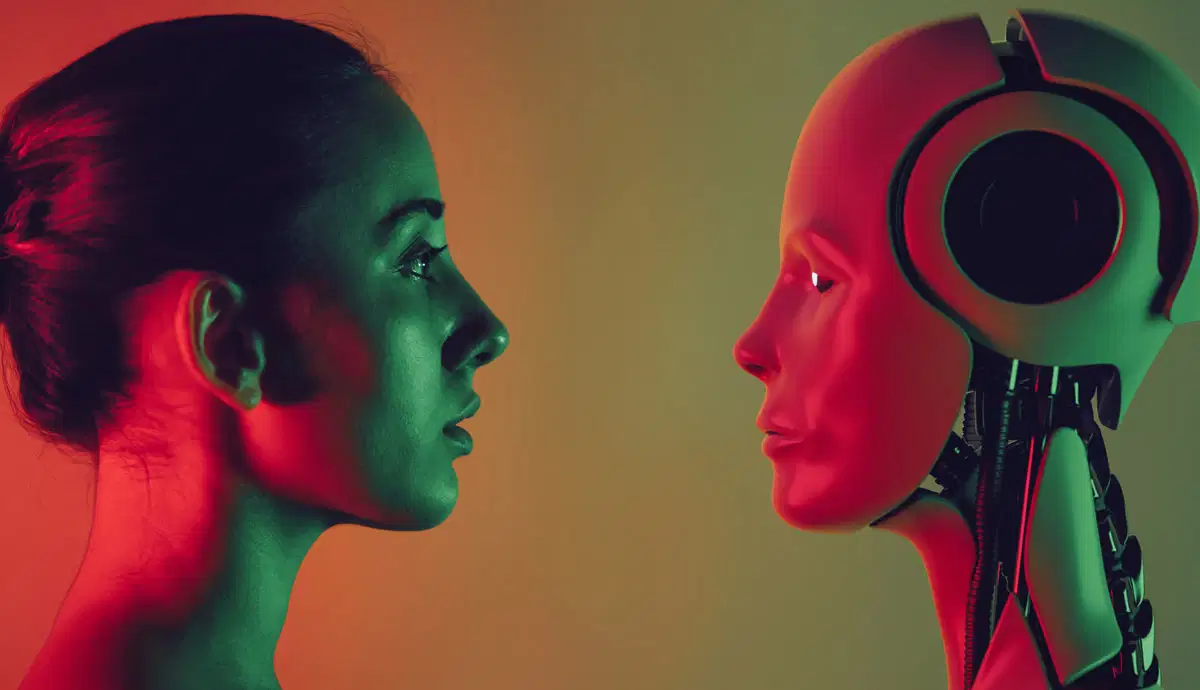JAKARTA, odishanewsinsight.com – Posthumanism: Beyond the Human Condition isn’t just a wild theory; it’s a topic that’s been popping up in my own life in the coolest (and sometimes weirdest) ways. Back in college, I thought tech was just about fast Wi-Fi and fancy phones—turns out, it’s way bigger. It’s about asking, “What’s next for us, humans? Are we moving past our old limitations?” Yup, it’s sorta mind-blowing.
Posthumanism challenges us to rethink what it means to be human in an age defined by rapidly evolving technology. By questioning the boundaries between biology and machine, mind and matter, posthumanism invites us to imagine a future where human capacities are enhanced, reshaped, or even transcended. In today’s tech-driven world, this philosophy isn’t just theoretical—it’s already influencing the way we live, work, and relate to one another.
1. What Is Posthumanism?

Posthumanism is a critical and philosophical movement that moves beyond the traditional humanist focus on human uniqueness and superiority. Instead of treating humans as the center of existence, posthumanism:
- Emphasizes the entanglement of humans, non-humans, and technology.
- Seeks to dissolve rigid distinctions between biology, machines, and the environment.
- Explores how emerging technologies can extend or transform human capacities.
By shifting our perspective from “What makes us human?” to “How can we evolve beyond current limitations?”, posthumanism paves the way for new forms of intelligence, embodiment, and social organization.
2. The Evolution of the Human Condition
Humanity’s journey from stone tools to smartphones has been marked by a continual push to overcome physical and cognitive constraints:
- P r i m i t i v e Innovations
- Early tools and fire enabled survival, communication, and cultural development.
- Industrial Revolution
- Mechanization amplified our strength and productivity.
- Digital Age
- Computers and the internet accelerated information exchange and global connectivity.
- Biotechnological & AI Revolutions
- Genetic editing, brain–machine interfaces, and artificial intelligence hint at a posthuman horizon.
Each milestone dissolves a barrier—whether lifting heavy loads, extending lifespan, or integrating our minds with machines. Posthumanism acknowledges these advances and asks: What’s next?
3. Posthumanism in a Tech-Driven World
In a world increasingly mediated by technology, posthumanism isn’t just a theory—it’s a lived reality:
- Artificial Intelligence (AI)
Advanced machine learning algorithms already assist in diagnosis, decision-making, and creative tasks, augmenting human intellect. - Genetic Engineering
CRISPR and related tools make it possible to edit the human genome, offering prospects for disease prevention and trait enhancement. - Robotics & Automation
From surgical robots to autonomous vehicles, robotics extend our physical reach and precision. - Brain–Computer Interfaces (BCIs)
Experimental implants enable direct communication between neural circuits and digital devices, hinting at new forms of cognition and empathy.
These technologies blur the line between natural and artificial, suggesting a future where human bodies and minds become platforms for continuous upgrade.
4. Living Smarter: How Posthumanism Enhances Daily Life
Posthumanist technologies are no longer confined to labs or sci-fi—many are already integrated into our routines:
- Smart Homes and Cities
• IoT sensors optimize energy use, traffic flow, and public safety.
• Voice assistants streamline communication and household management. - Wearable Tech and Implants
• Smartwatches track health metrics in real time.
• Biometric implants (e.g., glucose monitors) offer continuous feedback for chronic conditions. - AI-Driven Decision Tools
• Personalized learning platforms adapt to individual strengths and weaknesses.
• Predictive analytics help businesses streamline operations and tailor services.
Together, these innovations promise increased efficiency, improved well-being, and deeper connectivity—hallmarks of a “smarter” lifestyle underpinned by posthumanist principles.
5. Ethical Dilemmas and Challenges
With great power comes great responsibility. Posthumanism raises profound ethical questions:
- Identity and Agency
If mind-machine integration becomes seamless, what remains uniquely “you”? - Equity and Access
Who will afford high-end enhancements? Could a bifurcated society emerge, split between the “enhanced” and the “baseline”? - Privacy and Control
As BCIs and biometric data proliferate, how do we safeguard mental privacy and autonomy? - Regulation and Oversight
Rapid innovation often outpaces policy. How can we create agile ethical frameworks without stifling beneficial research?
Addressing these challenges demands multidisciplinary dialogue—uniting ethicists, engineers, lawmakers, and communities to ensure posthuman futures remain inclusive and humane.
6. The Future of Posthumanism: What Lies Ahead?
Looking forward, posthumanism hints at transformative—if speculative—possibilities:
- Mind Uploading and Digital Immortality
Could consciousness be transferred to synthetic substrates, transcending biological death? - Collective Cognition
Networked brains might collaborate at speeds and scales far beyond individual thought. - Spacefaring Posthumans
Genetic and cybernetic modifications could enable humans to thrive in extreme extraterrestrial environments. - Symbiotic Ecosystems
Integrating AI agents and synthetic organisms might help us restore ecological balance.
While these visions spark both excitement and unease, they underscore the importance of proactive stewardship: shaping a posthuman future that amplifies life, diversity, and shared flourishing.
Conclusion: Embracing the Posthuman Era
Posthumanism invites us to reconsider our place in the world—not as masters over nature, but as collaborators with technology, each other, and the broader ecological web. By thoughtfully embracing enhancements—from AI assistants to genetic therapies—we stand to unlock unprecedented levels of health, creativity, and social cohesion. Yet this journey demands wisdom, equity, and ethical vigilance.
As we navigate this tech-driven frontier, let us remember that the true measure of posthuman progress lies not in how much we can upgrade ourselves, but in how wisely and compassionately we wield that power—beyond the human condition, toward a truly smarter, more inclusive world.
Elevate Your Competence: Uncover Our Insights on Techno
Read Our Most Recent Article About Upskilling: Enhancing Capabilities in a Technology-Driven World!

